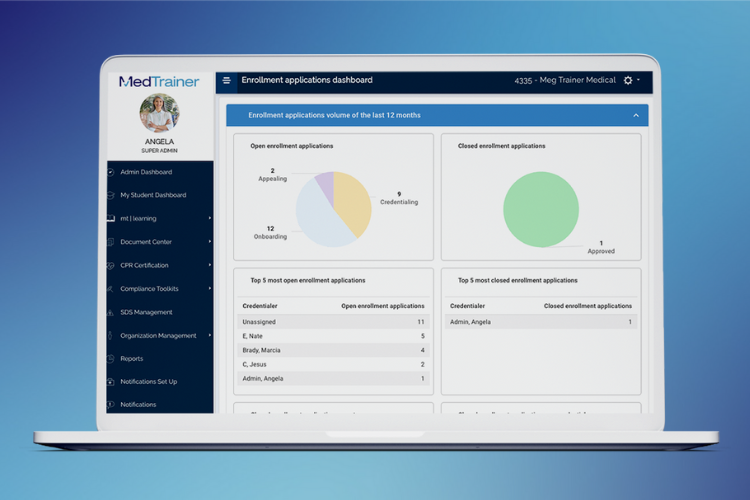Major CMS behavioral health changes will have wide impacts — not just for patients, but also for providers and organizations.
The Centers for Medicare and Medicaid (CMS) is bringing an approximate 400,000 behavioral health providers into their network. Credentialers everywhere are cringing as they think of how much work will need to be completed to credential these providers for the first time.
It’s not just the credentialing team facing huge changes. Billing, coding, scheduling, HR, and others will also need to adjust processes. But, on the flip side, there’s the potential for additional revenue for many organizations.
CMS 2024 Behavioral Health Changes Explained
Effective January 1, 2024, behavioral health providers will officially — and finally — be able to enroll with Medicare. This allows increased patient access and new opportunities for providers to expand their practice. Prior to January 1, Medicare patients could see counselors, but the services were not reimbursable by Medicare and had to be paid out-of-pocket by the client — a less than ideal agreement for almost anyone.
Another addition to Medicare coverage will be intensive outpatient (IOP) care. While Medicare has covered services like psychiatric hospitalization, partial hospitalization with daytime inpatient-level treatment, and outpatient therapy, IOP was not covered. Beginning January 1, coverage will expand to include IOP treatment services, closing the gap for intermediate level of care community needs.
Revenue Opportunities for Healthcare Organizations
The CMS behavioral health changes in Medicare coverage offer organizations and practitioners new revenue opportunities. In a field historically hindered by lower reimbursement rates compared to medical services, taking advantage of the changes can benefit providers across the country. Here are a few ways these policy changes can increase revenue.
Expanded Services
The changes to intensive outpatient (IOP) services will enable organizations to expand their programming, and revenue, without having to increase bed counts or fully admit patients. IOP is an opportunity for eligible locations, such as FQHCs and community mental health clinics, to increase revenue through Medicare reimbursements without incurring significant costs associated with facility expansion.
Increased Reimbursement
As part of the CAA, 2023, Section 4123 details new Healthcare Common Procedure Coding System (HCPCS) codes under the Physician Fee Schedule (PFS) for psychotherapy crisis services. The rule applies to crisis services provided off-site, such as homes or mobile units. Beginning January 1, 2024, the reimbursement rate for these services are at 150% of the existing fee schedule amount for non-facility sites of service, based on the rates established in 2022. The increased rates take into account the costs incurred by providers rendering crisis services outside of their clinical setting, leading to payments that are more fair and profitable.
New Patients
Typically, Medicare insurance is for individuals 65 years or older. Eligibility can also be extended to those with a disability, End-Stage Renal Disease, or Amyotrophic Lateral Sclerosis (ALS). What this means for behavioral health providers — specifically MFTs and MHCs as defined by CMS — is a broader client reach. Now that counselors and therapists are able to enroll with Medicare and receive reimbursement for mental health services, practitioners can open their doors to a whole new pool of clientele, as long as staff are equipped with the right professional development and training opportunities to ensure client needs are appropriately met. Providers need to be confident treating older individuals if it wasn’t part of their practice prior to January 1. Establishing a system for additional supervision, check-ins, and professional support groups will be key for organizations expanding services to Medicare clients.
Tips To Manage the CMS Behavioral Health Changes
Credentialing teams have their work cut out for them — and the tasks start well before January 1, 2024. With a whole new group of provider enrollments starting from scratch, credentialers will be juggling towers of documents and data — all while on a deadline. The faster a Medicare enrollment application is submitted to CMS, the faster providers can start seeing those clients. Here are a few tips for teams gearing up to tackle the influx of provider enrollments.
- Start Now. If you haven’t already begun the credentialing process, reach out to your providers NOW for the information and documents you need. Remember, you’re credentialing them with CMS for the first time, which means there’s a lot to cover and you’ll need time to fill the inevitable application gaps.
- Educate Yourself. CMS divides counselors into two main categories: marriage and family therapist (MFT) and mental health counselor (MHC). CMS has guidelines around each of those relating to education, state licensure, and more. Make sure everyone on the team is familiar with these roles and the processes and documentation that will be needed for each.
- Update Electronic Systems. In order for scheduling, coding, and credentialing processes to continue smoothly, some workflows and settings may need to be updated. For example, add MFT and MHC as provider types in your credentialing software so you can set the exact documents and data that you’ll need to collect for primary source verifications.
- Avoid Enrollment Delays. While you can’t necessarily finish Medicare enrollments faster, you can finish them slower if you’re not ahead of the game. With a 90 – 120 day enrollment timeframe after submitting a completed application, most providers won’t be able to see Medicare clients and submit claims until March or April.
- Be Efficient. Keep your enrollment applications process organized with a reliable tracking and reporting system. Log which documents you’ve received from providers, what’s missing, and the status of each application. Medicare’s Provider Enrollment, Chain, and Ownership System (PECOS) is the quickest and most efficient way for submitting enrollment applications.
- Communicate Often. Stay in communication with the providers and other staff so everyone knows what to expect and when to start scheduling services for Medicare clients.
Medicare Enrollment Moving Forward
Thanks to Medicare’s expansion in behavioral health policy, 2024 brings plenty of opportunity. Organizations will establish new systems, procedures, and processes in order to manage a new set of demands.
If this volume of credentialing seems insurmountable with your existing systems and workflows, consider moving forward with MedTrainer to accelerate your Medicare enrollments. Credentialing software enables credentialing teams to automate processes, track progress, and conveniently house provider documents in one single platform.

Complete credentialing 3 weeks faster
